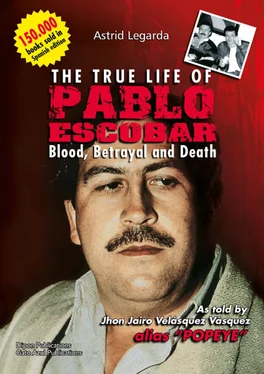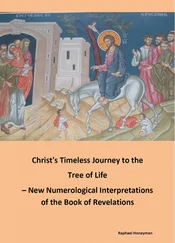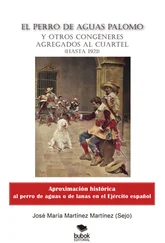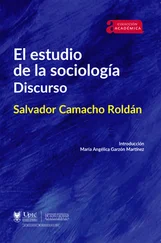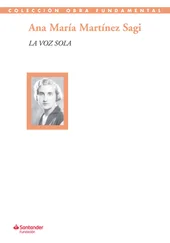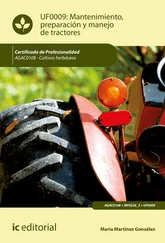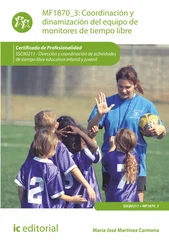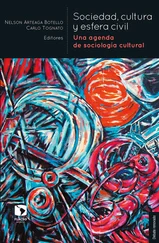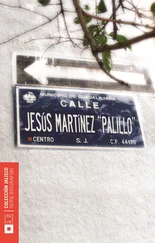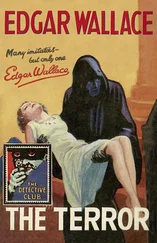Astrid Legarda
THE TRUE LIFE OF PABLO ESCOBAR
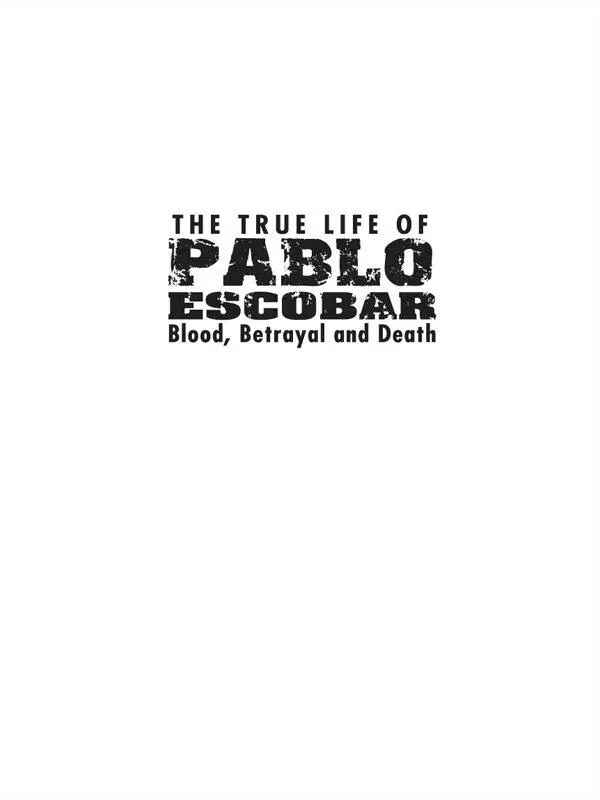
Legarda Martínez, Astrid María
The true life of Pablo Escobar : blood, betrayal and death / Astrid Maria Legarda Martinez; traducción Adriana Blanco, Debra Nagao. – Bogotá : Ediciones Dipón, Ediciones Gato Azul, 2017.
330 páginas : fotografías blanco y negro, color ; 23 cm.
Texto en inglés
ISBN 978-958-8243-54-2
1. Escobar Gaviria, Pablo, 1949-1993 2. Velásquez Vásquez, Jhon Jairo, 1962- 3. Narcotraficantes colombianos – Biografías 4. Violencia y narcotráfico – Colombia 5. Crimen organizado – Colombia 6. Cartel de Medellín – Colombia I. Blanco, Adriana, traductora II. Nagao, Debra, traductora III. Tít.
363.450986 cd 21 ed.
A1584004
CEP-Banco de la República-Biblioteca Luis-Angel Arango
First edition in English: November 2017
First edition in Spanish: August 2005
Original title in Spanish: El verdadero Pablo. Sangre, traición y muerte
© Astrid María Legarda Martínez, 2004
© Dipon Publications, 2005
edicionesdipon@outlook.com
Bogotá D.C., Colombia
© Gato Azul Publications, 2005
edicionesgatoazul@yahoo.com.ar
Buenos Aires, Argentina
ISBN: 978-958-8243-54-2
English translation:
Adriana Blanco
Proofreading correction:
Debra Nagao
Editorial preparation:
Dipon Publications
Cover design:
Germán Bello
Cover picture:
Courtesy of the newspaper El Espectador
Design:
Arte & Color Publicidad
Epub Design by:
Hipertexto
The text and the statements in this book are the exclusive responsibility of Mr. Jhon Jairo Velásquez Vásquez. The author merely assisted in compiling the present journalistic work. Neither the publishers, the printer, the distributor, the librarians, nor the translator have any responsibility for what is written in this book.
All rights reserved. No part of this publication may be reproduced, stored on a recoverable system or transmitted in any way or by any electronic, mechanical, photocopied, recorded or any other means without the prior written authorization of the publishers.
To our families, who with patience and love have endured the mistakes we have made and have always been there.
To my friends, who with courage and sacrifice never gave up and who today deserve another chance at peace in Colombia.
To my cousin Felix, “Puss in Boots,” for being near and offering us his friendship without asking for anything in return.
Thanks to the publishing house for believing in me and having courage when everybody else preferred to silence what the country needs to know.
Thanks to all those who, in one way or another, contributed so that the suffering Colombian people can know the truth of this part of their history, the truth about a war that should never happen again.
“Hello beautiful. I am Popeye.”
In 1998 I met Jhon Jairo Velásquez Vásquez—alias “Popeye”—lieutenant to the Medellín Cartel’s leader, Pablo Escobar Gaviria. Our first encounter was at the high security yard of the Modelo Prison in Bogotá, Colombia.
I visited the prison frequently as a journalist for RCN TV. I was always conducting interviews and speaking to the inmates, uncovering news about what was really happening inside the prison. At that time, stories about confrontations between guerrilla and paramilitary factions were everyday news. You could often hear shots inside the prison as the different sides fought for control.
I had always wanted to meet one of the members of the Medellín Cartel. I was curious to know who they were, what they looked like, and what these men, who belonged to the most powerful drug cartel that has ever existed in Colombia, were thinking. At the high security yard I was able to talk with two of them. The most notorious was Jhon Jairo Velásquez Vásquez.
“Hello beautiful. I am Popeye.” The man who sat in front of me stared at me. His pale skin reflected the six years he had been in prison; in fact, it looked as if he had never once stepped outside. Popeye smiled at me with curiosity while his cold eyes examined me from head to toe. We were introduced by another inmate, Ángel Gaitán Mahecha, a man accused of paramilitarism and homicide.
My first impression was surprise and curiosity; I also examined him from head to toe. He wasn’t quite six feet tall. His slim body and the smile on his face almost put me at ease. I thought this man couldn’t possibly frighten anyone, and yet I couldn’t forget the number of homicides in which he had been involved. I wanted to see into the mind of the man who planned and participated in the most horrible homicides that the cartel had carried out in their war against the state.
I had always imagined Pablo Escobar’s lieutenant like the killers in horror movies—cold, reserved, and just downright mean. But this bad guy not only had a talent for crime, but humor as well. His inmates were used to his jokes and he knew how to make everyone laugh. He was known for his quick wit.
Popeye took me by the arm and said, “Don’t be afraid beautiful; I don’t bite,” and he invited me to have coffee as his prison mates looked on with curiosity. We sat at a big table that served as a dining table for the inmates. He hadn’t even started drinking his coffee when I began bombarding him with all kinds of questions. My journalistic curiosity couldn’t be satisfied. He answered everything without holding back even the slightest detail. He even often burst into laughter at my line of questioning. As a journalist I couldn’t miss such an opportunity to discover how Pablo Escobar and his accomplices operated. I took advantage of our time.
By the end of the day, around five in the afternoon, the guard announced that visiting hours were over and it was time to leave the prison. By that time, I had already proposed to Popeye that we write a book together. He laughed and confessed that he trusted me, assuring me that if someday he decided to write a book, it would be with me.
On my way out of the prison, I stopped to think. I was surprised at the evil capacity that a group of men, thinking that they had the absolute truth, could produce and, worse yet, at the corruption of the many government employees who succumbed to the charms of Pablo’s money. But the incredible part of the stories I heard that day was that, although the events had happened right here in Colombia, many people just like me had no idea. That’s why I decided that, in spite of Popeye’s first refusal to write the book, I would continue urging him to summon the courage to tell me his life experiences and, in doing so, face his destiny.
Eventually, destiny or not, Popeye authorized me to write his story. He said that he would do it when the time came, and that moment came sixteen months ago, when he called me and he said in his particular way of teasing me, “Hello, beautiful. I escaped.” The voice on the other end of the line was unmistakable. Popeye was calling from the maximum-security prison in Cómbita, Boyacá. I had gotten used to his sense of humor, since we kept in constant contact by phone.
“Beautiful, cheer up. We are going to write the book.”
I thought he was teasing, but there he was, getting me excited anyway. We agreed on an appointment for the next Sunday. I would enter Cómbita Prison as a family visitor to coordinate how we would start our work.
The clock said three in the morning. I watched it intently as I waited to be picked up. Something about the combination of the cold, my drowsiness, and my anxiety made me especially impatient. Finally, at 3:15 a.m. the car arrived and we headed toward Cómbita Prison, three hours away from Bogotá. Popeye was waiting for me at patio number two.
Читать дальше
